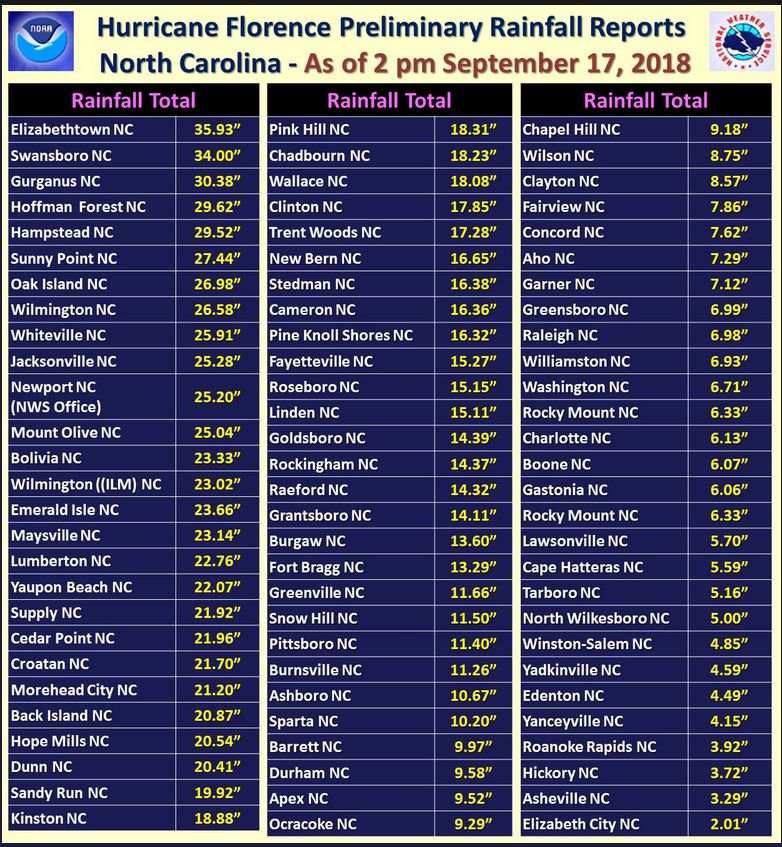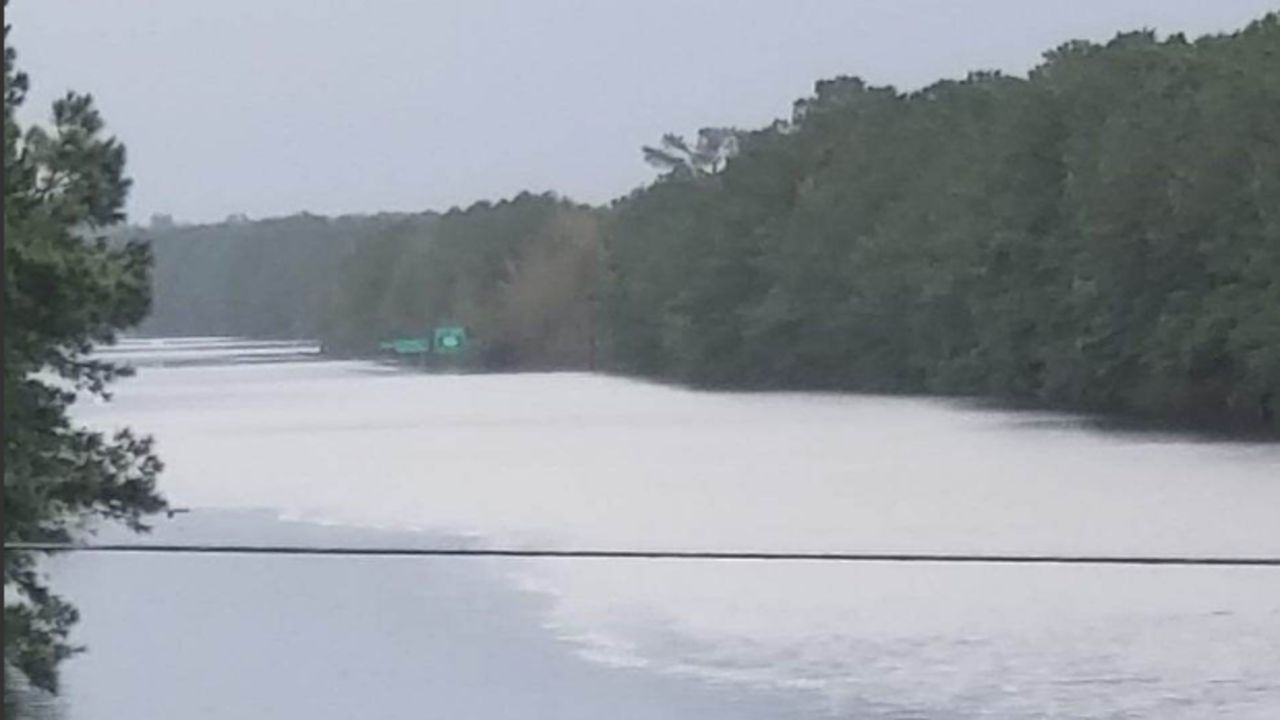Florence continues to move away from the Carolinas and into the Ohio Valley region today.
Florence remains a tropical depression with winds now down to 25 mph. Its movement toward the north continues to increase. It is now moving toward the northeast at 15 mph.
It will continue its increase in speed and movement toward the Ohio River Valley region today and then move into the northeast tomorrow.
The center of Florence is located 240 miles west of Charlottesville, Virginia.
Flash Flood Warnings continue across a large portion of central and southeastern North Carolina.
Flash Flood Watches also continue through this afternoon for portions of southeast North Carolina.
The rain is continuing to taper off this afternoon and this trend will continue into the evening. The flooding threat will continue well after the rain lets up especially along area rivers.
Though rain is subsiding for most the state, there is still concern that some rivers have yet to crest, creating further devastation.
FLORENCE RECAP:
Concern about Florence started to surface during the first week of September. As the track became more certain, officials started to prepare. Gov. Cooper issued a State of Emergency for the state on Sept. 7, a week before the hurricane made landfall. The State of Emergency allowed for farmers to transport and harvest their crops quicker. On Monday, Sept. 10, President Trump declared an emergency and ordered federal assistance to the state.
On Sunday Sept. 9, Florence became a Category 1 hurricane, and by the very next day it had strengthened into a Category 4 storm. Weather models suggested it would make landfall as a Category 4 with catastrophic wind damage as well as storm surges and flooding. It was forecast to make landfall anywhere between Charleston and the Outer Banks. It wasn’t until late on Wednesday, Sept. 12 that Florence was downgraded to a Category 2, and then on late Thursday, Sept. 13, it became a Category 1, bringing a slight glimmer of hope to concerned residents of coastal areas.
Hurricane Florence officially made landfall as a Category 1 storm near Wrightsville Beach around 7:15 a.m. on Friday, Sept. 14. It remained a hurricane for several hours before being downgraded to tropical storm status later that evening. It finally became a tropical depression in the morning hours of Sunday, Sept. 16.
Though Florence made landfall as a far weaker storm than originally anticipated, its devastation stemmed from the fact that it stalled out, dumping copious amounts of rain over a long period of time. The National Weather Service reported that at one point after landfall, the storm was moving at only 2 mph, slower than the average walking pace.
As of 2 p.m. on Monday, Sept. 17, these were the rainfall totals from Florence:

FATALITIES:
Florence has claimed the lives of more than a dozen people. A mother and her infant were killed when a tree crashed on their Wilmington home. Flash flooding claimed the lives of three in Duplin County. And carbon monoxide poisoning claimed the lives of a man and woman in South Carolina.
- Hundreds of thousands of people across the state lost power. Check the current power outage reports here.
- In New Bern, hundreds took to social media to cry for help as rising floodwaters threatened their safety.
- Rain washed out railroad tracks and caused a train to derail in Lilesville.
- Trees and power lines fell in areas across the state. In Wilmington, a homeowner lost three vehicles when a nearly 90-year-old tree his parents had planted fell.
- In Wilmington, rainfall from the storm breached a coal ash landfill. Duke Energy says 2,000 yards of material was displaced.
- Also in Wilmington, looters hit a Family Dollar and stole several items from the store.
- In Robeson County, a building housing a newspaper company sustained major damage. This is the second time the building has been damaged in the past two years; the last time it was severly damaged was during Hurricane Matthew.
- A dam in Brunswick County breached following severe flooding caused by Florence.
- In New Bern, a news station was forced to evacuate due to rising floodwaters.
CURFEWS STILL IN PLACE:
Some counties and municipalaties have instituted curfews for their citizens to ensure their safety with flooded roadways and downed trees. View a few list of curfews across North Carolina here.
CLOSINGS:
Businesses and schools, particularly in the southeastern portions of the state, will likely remain closed for several more days.
Find closings for your region below:
EVACUATIONS:
As areas continue to suffer from Florence, voluntary and mandatory evacuations have been issued statewide. Areas prone to river flooding are still in danger. View the full evacuation list here.
ROAD CLOSURES:
State officials are urging motorists to be mindful of routes they take, as some may be surrounded by bodies of water that have the potential to flood, or trees or power lines have fallen on them. To find the safest route for your travel, click here.
Some areas, particularly on the coast, are beginning the re-entry process. View a full list of areas allowing re-entry here.
RESOURCES TO HAVE ON HAND IN THE WEEKS AHEAD:
There are a lot of things to keep in mind if you are returning to a home after evacuating or being away during a storm. Keep these tips on hand.
In the weeks ahead, residents of North Carolina will have countless opportunities to help those devastated by Florence. Here are a few available so far:
Stay up to date on the clean-up and aftermath of Florence:
- Florence resources and helpful links
- How to begin the steps to recovery
- Residents return after Florence
- Like us on Facebook
- Watch Live
- Closings and delays
- Download the App



